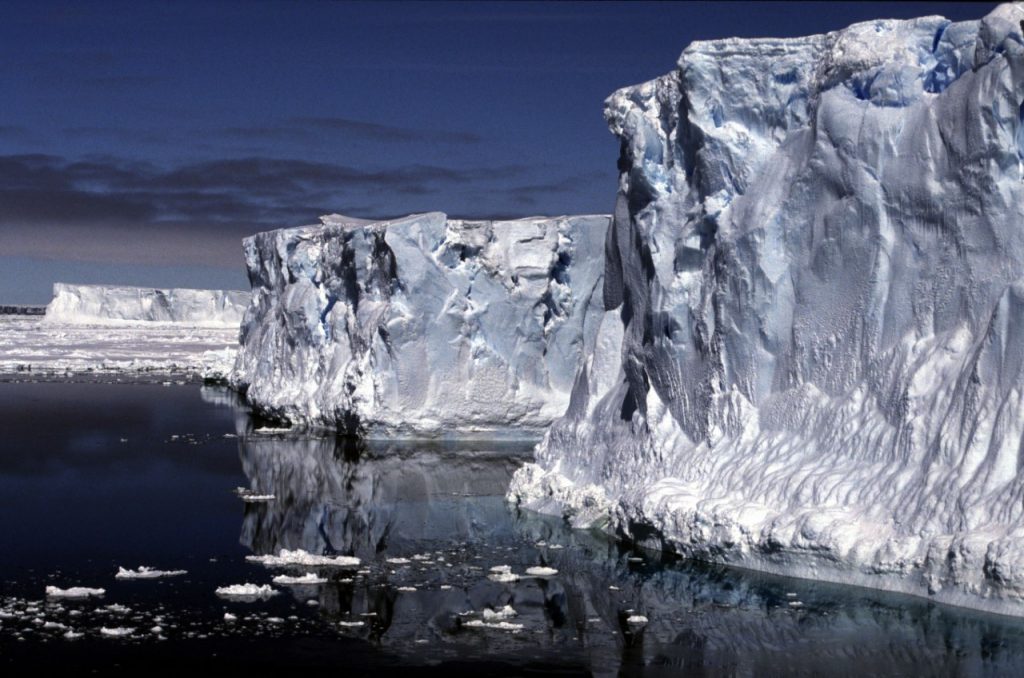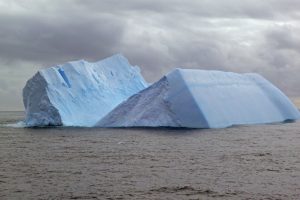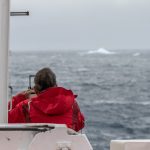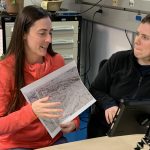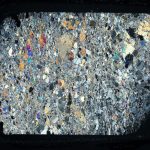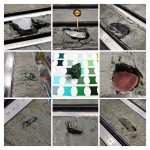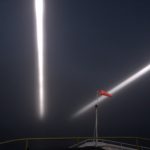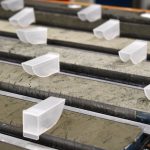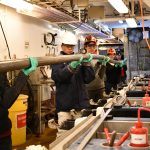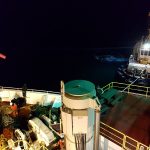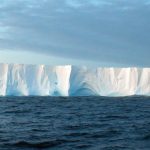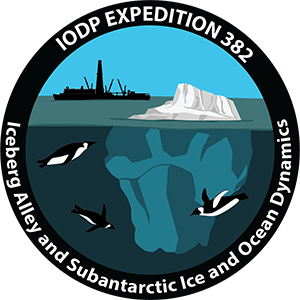
Iceberg Alley and Subantarctic Ice and Ocean Dynamics
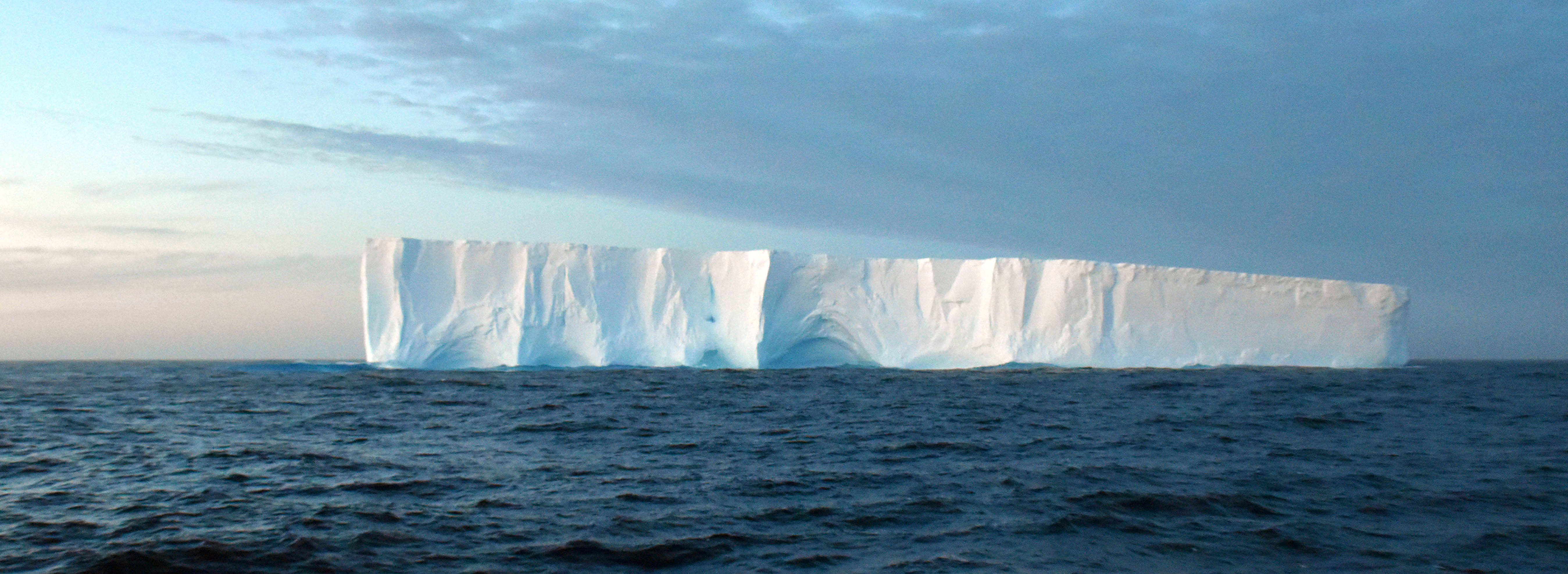
Polar researchers predict that global sea level will rise about one meter (around 3.2 feet) by 2100. Much of this rise will be due to melting of the Antarctic Ice Sheet, the massive layer of ice, on average 1.3 miles thick, that covers the vast continent of Antarctica. But how much will sea level rise and how fast?
Icebergs break, or “calve,” off the edges or margins of the Antarctic Ice Sheet. Most travel counterclockwise around the Antarctic coast and converge in the Weddell Sea. From here, they drift northward through “Iceberg Alley” into the warmer waters of the Antarctic Circumpolar Current, which races clockwise around Antarctica.
As icebergs melt in these warmer waters, the dust, dirt, and rocks they carry—known as “iceberg rafted debris”—fall down through the ocean and are deposited as sediment on the seafloor. The JOIDES Resolution can drill hundreds of meters into this sediment and retrieve long cylinders of mud called cores. These sediment cores will provide a nearly continuous history of changes in melting of the Antarctic Ice Sheet.
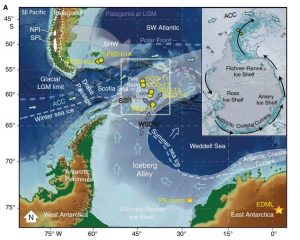
Analyzing the iceberg rafted debris can tell us when the ice sheet calved icebergs and even which part of Antarctica they came from. At times when more debris was deposited, we know the ice sheet was less stable. Much shorter cores previously collected at our drilling sites reveal high sedimentation rates, allowing us to observe climatic and ice sheet changes on timescales ranging from just tens to hundreds of years.
Scientists have discovered that episodes of massive iceberg discharge can happen abruptly, within decades. This has huge implications for how the Antarctic Ice Sheet may behave in the future.
We will also explore how ocean currents, sea ice, and atmospheric conditions in the past are related to changes in melting of the Antarctic Ice Sheet. As we collect cores to the north and the south of the Drake Passage, the narrow waters between Antarctica and the tip of South America, we will be able to see how the Antarctic Circumpolar Current has changed over time. Our northern drilling sites will additionally tell us about another historically important ice sheet: the Patagonia Ice Sheet.
Together, all of this data will illustrate the long-term climate history of Antarctica, showing how the ice sheets responded to changes in atmospheric carbon dioxide in the past, and how changes in the ice sheet influenced global sea level. This knowledge will help us understand how the Antarctic Ice Sheet may respond in a warming world, better preparing us for future global sea level rise.
ExP382 Iceberg Alley in the Media
BBC News: Climate Change and Drilling in ‘Iceberg Alley’
CBS This Morning: Earth Matters-Stories from Every Continent
National Science Foundation: Scientists Set Sail on Expedition to Investigate Iceberg Alley Off Antarctica
European Geosciences Union: EGU Cryosphere
ConCiencia, Andalucía Televisión, inclu. interview with Marga Garcia.
Envirobites: Voyage to Iceberg Alley
Physics.org: Deep-sea Drillers Investigate Shedding of Antarctic Icebergs
State of the Planet, Columbia University: Deep-sea Frillers Investigate Shedding of Antarctic Icebergs
Universität Bonn: Wettertechnisch so ziemlich am schlimmsten Ort der Erde
Die RheinPfalz: Aus Glan-Münchweiler in die Antarktis: Michael Weber ist Leiter einer bedeutenden Expedition
Science News: Antarctica’s iceberg graveyard could reveal the ice sheet’s future
Gomantak Times: Rise in Sea Level Threatens Goa’s Coastline
Generalanzeiger: Hohe Wellen, kalte Winde, “fantastiche Daten'”
Kölnische Rundschau: Mission im ewigen Eis Bonner Antarktis-Expedition auf den Spuren des Klimawandels
CanalSur Radio Y Television, Concencia: Red de Bólidos y Meteoros del Sur de Europa
BLOGS BY OUR SCIENTISTS
PlanetErde: Week 1: Warten im Labyrinth By Thomas Ronge
PlanetErde: Week 2: Klimageschichte im Schlamm By Thomas Ronge
PlanetErde: Week 3: Auf den Spuren von winzigen Meeresbewohnern By Linda Armbrecht
PlanetErde: Week 4: Shades of Gley by Anna Glüder
PlanetErde: Week 5: Eisberge und Entscheidungen by Mike Weber
PlanetErde: Crossing the Bar by Thomas Ronge
Expedition Antarctica: IODP Expedition 382 Week 1: Our foray into Iceberg Alley and Subantarctic Ice and Ocean Dynamics By Michelle Guitard
Expedition Antarctica: IODP Expedition 382 Week 2: Our First Cores & the Chaos That Ensued By Michelle Guitard
Expedition Antarctica: IODP Exp. 382 Week 3: Our guest blog and a Southern Ocean connection
Expedition Antarctica: IODP Exp. 382 Week 4: Our best-laid plans
Expedition Antarctica: IODP Exp. 382 Week 5: Our journey through time
Expedition Antarctica: IODP Exp. 382 Week 6: Our two selves
Expedition Antarctica: IODP Exp. 382 Week 7: Our work has just begun
Expedition Iceberg Alley By Frida S. Hoem
Postcards from Antarctica: Sampling for Ancient DNA by Linda Armbrecht
